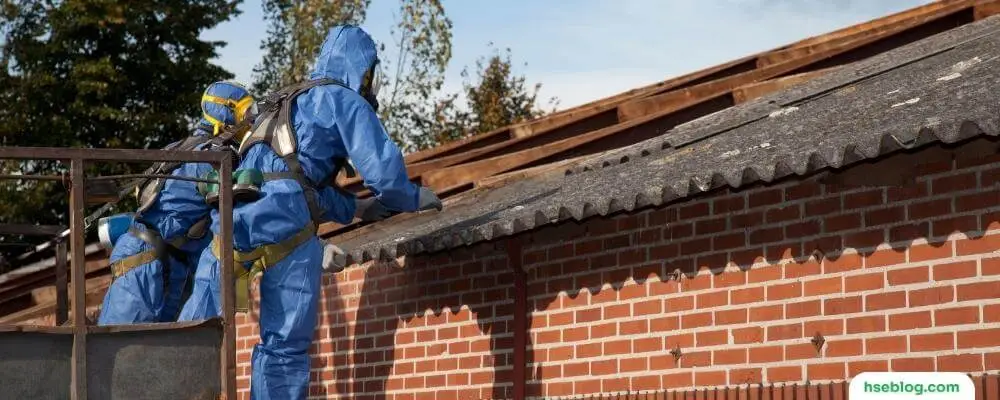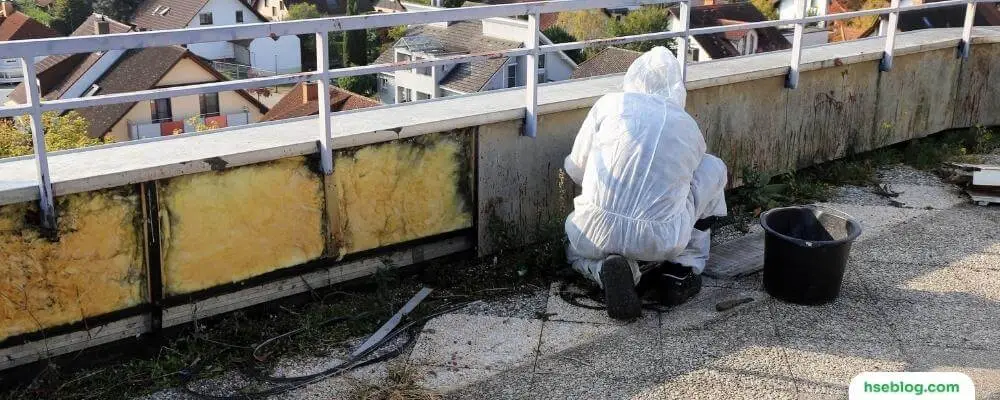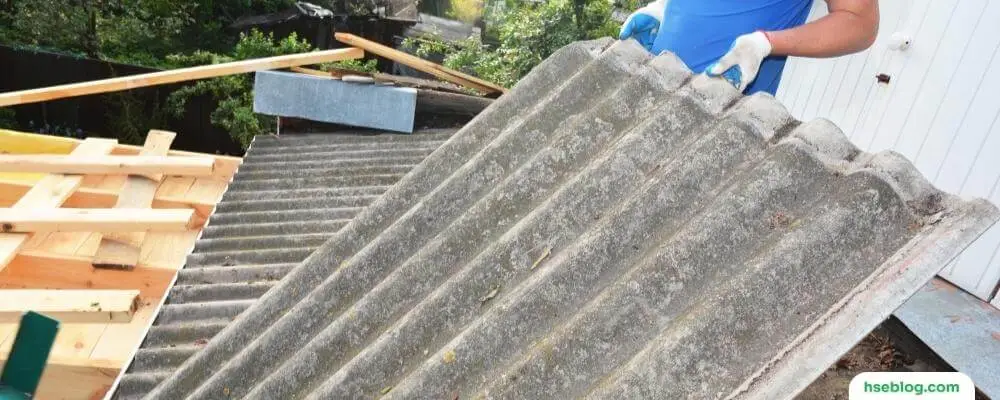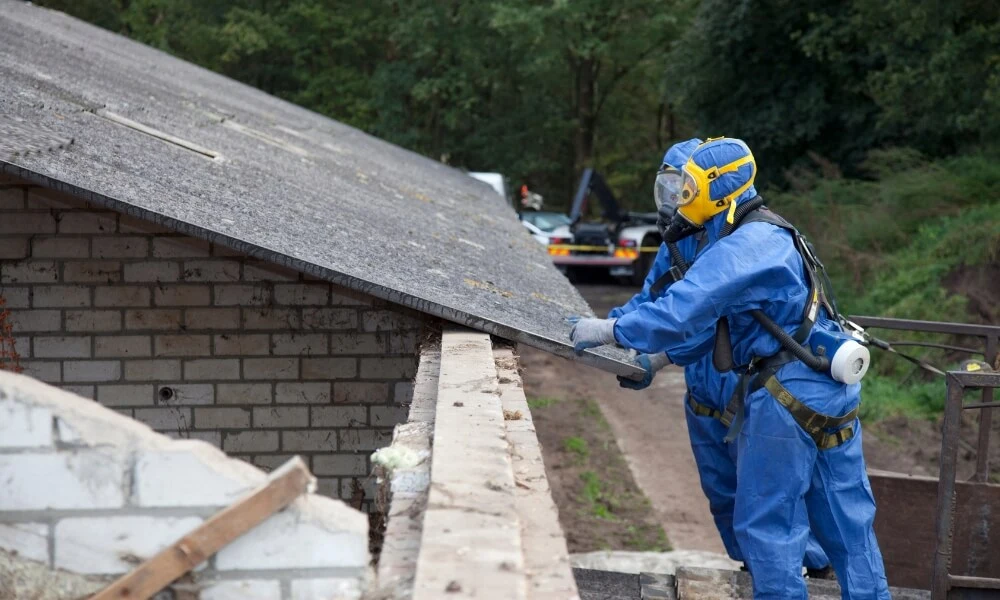The word ‘asbestos’ can evoke a sense of alarm for many, given its notorious association with various health concerns. However, with the right knowledge and approach, you can navigate through this potential minefield without succumbing to endless worry. Whether you’re a homeowner, a contractor, or simply someone keen to understand more about this fibrous mineral and its implications, this guide is for you.
We’ve meticulously outlined 10 key steps to help you manage and mitigate concerns related to asbestos, ensuring you’re well-equipped to handle any asbestos-related scenario with confidence and calm. Dive in and empower yourself to stop worrying about asbestos.
How To Stop Worrying About Asbestos?
Asbestos, a naturally occurring fibrous mineral, has historically been used in a range of products, from insulation to automotive brakes. Although its use has dramatically declined due to the associated health risks, concerns surrounding asbestos persist, especially in older buildings.
While it’s essential to recognize the potential dangers, constant worry can be detrimental to your well-being. To help mitigate concerns, here are ten key steps on how to stop worrying about asbestos.

1. Educate Yourself About Asbestos
Asbestos has a deep-rooted history, especially in the construction sector. Primarily used for its resistance to fire, heat, and corrosion, asbestos became a popular building material in the 20th century. Its versatility was unmatched; it was added to products ranging from insulation and roofing to textiles and even automotive parts. However, with time and research, the hazardous health effects of asbestos became undeniable. As a result, its popularity waned, but not before it had already been extensively utilized.
Central to this understanding is recognizing the difference between the two primary types of asbestos: friable and non-friable. Friable asbestos can easily crumble when handled, releasing its hazardous fibers into the air. In contrast, non-friable asbestos, often mixed with other materials, doesn’t release fibers as easily unless it’s damaged or interfered with. Both types, however, can pose potential health risks, especially when the fibers become airborne and are inhaled.
2. Assess The Risk
The age and condition of a building can significantly indicate the potential presence of asbestos. Structures constructed before the 1990s are particularly suspect since asbestos was a favored material then. While the mere presence of asbestos is not inherently risky, its condition can escalate concerns. Intact materials pose a lesser threat as they don’t release fibers readily.
However, deteriorating materials—cracked, crumbled, or damaged—may release harmful asbestos fibers into the environment. Hence, a keen visual inspection can serve as an initial risk assessment.
3. Consult Professionals for Asbestos Testing
Suspecting asbestos in your environment can be concerning, and acting on mere suspicion is not enough. Instead, the surefire way to confirm its presence is by consulting professionals specializing in asbestos testing. These experts are trained to handle potentially hazardous materials with care, ensuring minimal risk of fiber release during the sampling process.
Once samples are collected, they are sent to specialized labs that can determine not just the presence but also the concentration of asbestos fibers. This analysis then becomes the cornerstone for further action, guiding decisions about management, encapsulation, or removal.
4. Avoid Disturbing Suspected Materials
Caution is the watchword when dealing with potential asbestos-containing materials. Any undue interference—be it drilling, sanding, cutting, or breaking—can release fibers into the atmosphere, exacerbating health risks.
If you’re unsure about the presence of asbestos in a particular material, it’s wise to treat it as if it does contain asbestos until professional testing can confirm otherwise. Keeping potential ACMs undisturbed mitigates the chance of accidental exposure.

5. Prioritize Proper Maintenance
Awareness of the presence of asbestos in your building underscores the importance of meticulous maintenance. Regular inspections can identify signs of wear, damage, or aging in materials, flagging them for attention before they become hazardous.
By maintaining materials in good condition, you’re effectively containing the asbestos, preventing the fibers from becoming airborne. This might mean sealing off cracks, ensuring surfaces are intact, or encapsulating asbestos-containing sections to safeguard the surroundings.
6. Ensure Use of Personal Protective Equipment (PPE)
When dealing with asbestos or even suspected asbestos-containing materials (ACMs), safety must always be the primary concern. Personal Protective Equipment (PPE) acts as the first line of defense against potential exposure.
Essential items include high-efficiency particulate air (HEPA) filter respirators, which prevent the inhalation of tiny asbestos fibers, and disposable coveralls to prevent fibers from latching onto clothing.
It’s crucial to note that standard masks or dust masks are insufficient; only specialized respirators can offer the necessary protection against airborne asbestos particles.
7. Challenge Negative Thoughts
The mind has an uncanny ability to weave stories, often magnifying perceived threats. While it’s natural to worry about potential health risks, it’s essential to differentiate between fact-based concerns and undue anxiety.
When consumed with worry, take a step back and evaluate the origins of these feelings. Are they rooted in reality, or are they products of assumption?
Sometimes, seeking an external perspective, such as that of a therapist or counselor, can be beneficial. Professionals in the mental health field can provide invaluable tools and coping strategies to navigate through and challenge these overwhelming fears.
8. Practice Mindfulness and Relaxation
Amidst the clamor of daily life and looming concerns, finding a sanctuary of peace becomes crucial. Mindfulness practices, such as meditation, deep breathing exercises, and yoga, have been shown to be effective in alleviating stress and anxiety.
These practices promote a state of present-moment awareness, diverting attention away from distressing future uncertainties. Even committing just a few minutes each day to such practices can usher in a profound sense of tranquility, grounding the mind and mitigating worry.

9. Stay Updated with Local Regulations and Recommendations
Asbestos-related research and understanding are continually evolving, leading to periodic updates in guidelines and recommendations by health organizations and government bodies. Staying informed about local and international regulations ensures that you’re always equipped with current knowledge.
Being updated not only ensures compliance but can also bring peace of mind, knowing that you’re aligned with the latest safety best practices.
10. Seek Expertise for Removal if Necessary
Discovering the presence of asbestos can be unsettling. However, if professional testing confirms its presence and deems it a potential health risk, it’s crucial to act promptly. Engaging experts who specialize in asbestos removal becomes essential. These professionals are trained to handle and dispose of asbestos-containing materials safely.
Their methodologies ensure minimal fiber release during the removal process, protecting both the environment and the occupants. Once the asbestos is safely removed and the area is decontaminated, residents can enjoy the assurance of a risk-free environment devoid of asbestos-related concerns.
Conclusion
In the labyrinth of modern-day concerns, asbestos, while legitimate, shouldn’t overshadow our daily peace of mind. By arming ourselves with the right information, prioritizing safety, and making informed decisions, we can tackle this challenge head-on. Remember, knowledge and proactive action are our most potent tools against fear.
By following the 10 key steps detailed in this guide, you’re not only safeguarding your immediate environment but also paving the way for a less worrisome future. After all, a well-informed approach to asbestos is the key to transforming apprehension into assurance.

